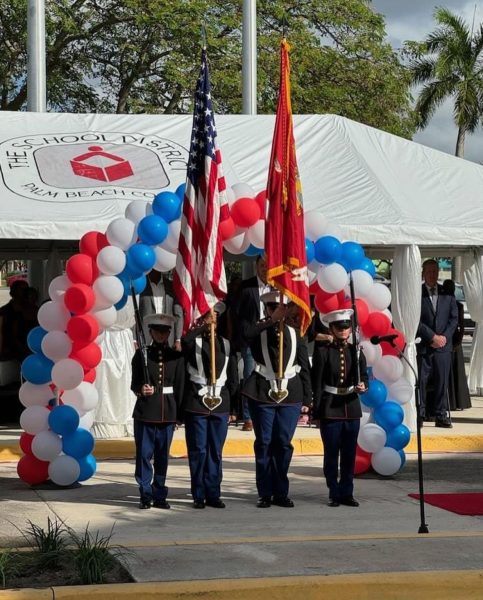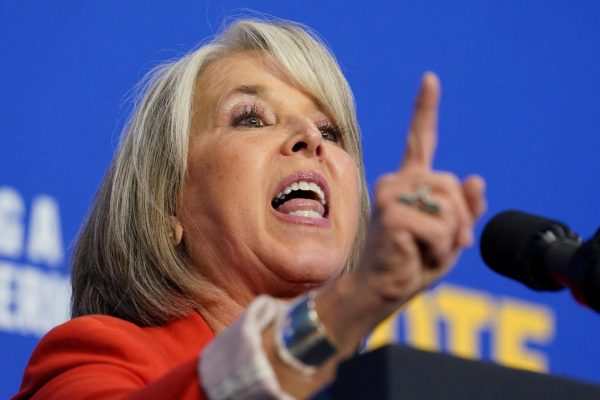High School Extra-Curriculars Can Be Cost Prohibitive for Low Income Students

Poverty has been, and most definitely always will be, an ongoing issue within the United States. According to the National Center for Children in Poverty (NCPP), nearly 43 percent of all children are being brought up in low-income families.
While the average high school student living in Boca Raton may be thinking, “This isn’t the case where I go to school,” more local students are living in poverty than expected. In fact, Olympic Heights serves free or reduced lunch to 24 percent of its students. That is nearly 530 students whose families are most likely struggling on a daily basis to make ends meet.
While the administrators and staff members at OH are aware of this situation, there is a pretty significant limit as to the accommodations they can make. Apart from lowered prices for lunch, free bus transportation, and the overall free access to education, there is very little provided to students living in low-income families.
Because of this situation, hundreds of students at OH are forced to miss out on school related activities simply because they do not have the financial means to participate. And, while many of these activities are primarily optional, these students are put at a great disadvantage.
One such issue is with resumes and college applications. Colleges these days are looking at much more than just grades and academic success; colleges want to see that students are engaged in their high school in ways such as joining clubs, volunteering around campus, or playing on a sports team. Yet, almost all options listed above require some sort of financial obligation on the student’s part, and the many who cannot afford to pay are forced to sit out.
As with most other high schools, a heavy emphasis is put on the sports teams at OH. And while some students have been granted incredible opportunities because of their outstanding performance on teams such as football and soccer, these contingencies are only available to the fortunate-enough students who can afford to even play on the team in the first place.
Evidently, the most expensive sport at OH is Boys Varsity Baseball with a financial obligation or “fair share” of $475. Now this money is being put back towards the team itself, covering the costs of game officials, uniforms, shoes, equipment bags, etc., but that cost is still an exorbitant amount of money that nearly a quarter of our student body could in no way afford.
Football, too, requires a large team contribution that many cannot afford. With such a dangerous and risky sport, much more of the money needs to go into personnel as opposed to accessories. At each and every game, there is not only the cost of the referees and officials, but also mandatory police presence and an ambulance on standby. Therefore, the cost to play on the team can in no way be overlooked or modified, and those who cannot pay the price are usually not able to be on the team.
This then leads to the question, “What if someone deserves to be on the team based on their skill level but cannot meet the required “fair share” obligation?” To some extent, it depends on the coaches and how willing he or she is to work out a form of accommodations, but the Athletic Department at OH has been able to work around this impediment in the past.
However, OH Athletics Director and Head Softball Coach Cindy Lucia makes it clear that “the county only says a student has a right to education,” and that “sports are extra- curricular,” so there is no school district directive dictating that a student should not be prohibited from athletics based on their inability to meet the “fair share” obligation.
Lucia is quick to point out that the school does help out as much it can, but it is still mainly up to the student to come up with the funds needed. She asserts that, basically, the only way in which the school can help first hand in a situation like this regarding sports teams is by having the school district mandated $75 insurance fee paid out of the student/athlete’s team’s account, however the account must eventually be reimbursed by the student/athlete which can be done in incremental payments
The coach of each team has a bit more leeway in regards to the “fair share” obligation, but straying from having every student/athlete from meeting that obligation can present a host of additional problems. the student. Lucia does add that each and every team at OH has fundraising options such as car washes and banner sales so that a student theoretically would not have to pay a penny out of pocket. But, the question still comes into play as to how likely it is that a student from a low income family will be able to meet the higher “fair share” obligations just through school related fundraisers.
Lucia also shares that she personally has had to occasionally deal with this very circumstance as a coach. She first notes that when students unable to pay their “fair share,” they are not up front about it and she usually has to call them down to her office to find out why they have not given their coaches the required payment. Yet, when they do admit that they need financial assistance, she is more than willing to put in some effort herself to ensure that the student can get money through fundraising.
Lucia discloses that there are businesses with which she works that will agree to buy a banner to support a student in need, but she insists that the student him or herselff do the work and that she “[doesn’t] want them to expect to be paid for each year.”
Lucia also explains that payment plans can be discussed so that a student does not have to pay the full requirement in one large sum. Basically, the OH Athletic Department does its best to ensure that students can and want to be a high school athlete, but due to the fact that sports are extra- curricular activities, there are limits to the amount of financial support that is provided.
While this may be the case for extra-curricular activities around campus, other areas of engagement take different approaches. The most prominent case of this at OH is with chorus. OH chorus director Mr. Richard Andreacchio decided to eliminate any sort of financial obligation requirement for students to participate in chorus, whereas before hundreds of dollars were required. Instead, group fundraisers cover the entirety of the necessary financials to keep the OH Choral Department sounding beautiful.
There are still some hidden fees though when wanting to have a spot in the choir. Soundsation is one of a few branches of the chorus department at OH. Each member is required to pay for his or her own uniform (dress for girls or tux for boys) with a cost of $62 as well as having to pay for the optional trips that the group takes. While this is significantly less costly than being a student athlete, many still may struggle to find the money to join Soundsation, but the other choirs open to students are entirely free and any student who has a love or passion for singing can make his or her way into the chorus of OH.
“Finances in a public school should not alienate any student from participating in this music program if they have a desire,” Andreacchio explains. He truly believes that money, or lack thereof, should not be factor for a student being left out or unable to participate in school activities.
One can only hope that poverty is eventually stricken for our vocabulary and that everyone can come to live in a comfortable, safe manner. But for the time being, any miniscule effort can make a difference. OH and other Palm Beach County schools are doing their best to accommodate those in need, and, for the tremendous number of students whose families struggle to make ends meet, those efforts can be very helpful toward making sure no student is excluded based on their family’s financial status.














